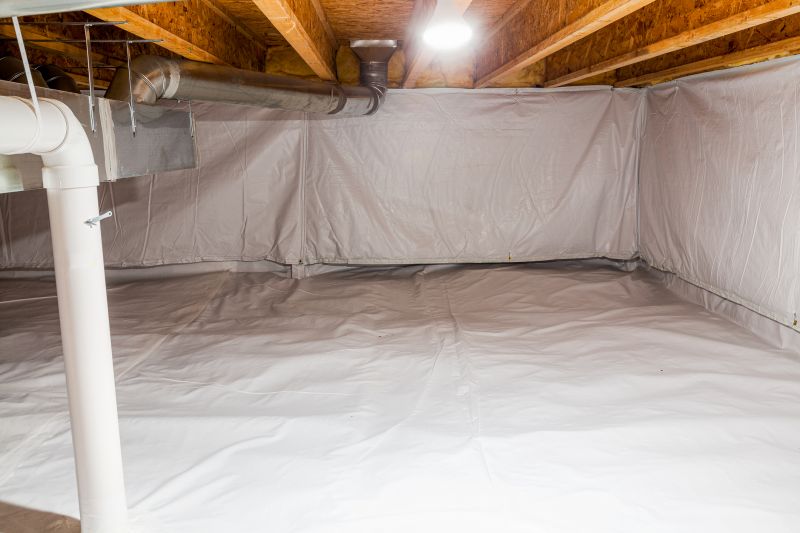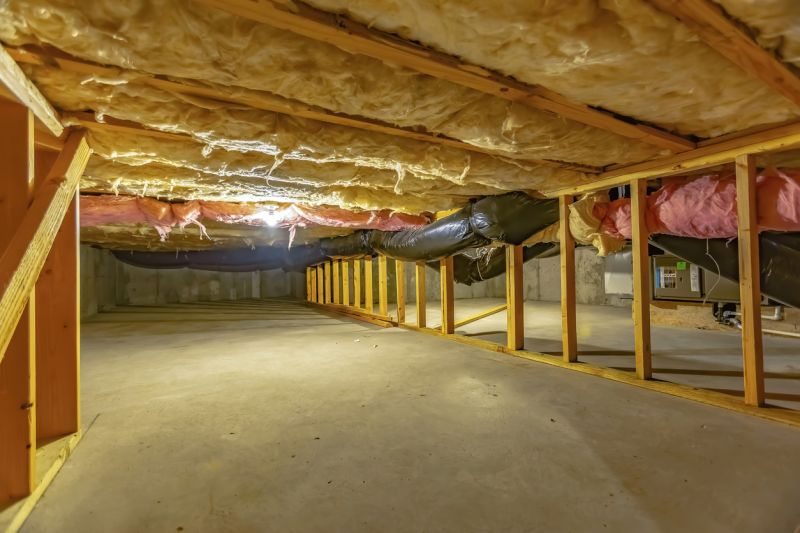Transform Your Crawlspace for Improved Home Value
Crawlspace encapsulation is a vital process that involves sealing and insulating the crawlspace to prevent moisture intrusion, improve air quality, and enhance energy efficiency. Proper encapsulation can significantly reduce the risk of mold growth, wood rot, and pest infestations, contributing to a healthier indoor environment and lower utility bills.
Encapsulation prevents excess moisture from entering the crawlspace, reducing mold growth and structural damage caused by damp conditions.
Sealing the crawlspace minimizes heat loss, leading to improved home heating and cooling efficiency and potential savings on energy costs.
Encapsulating the crawlspace reduces the infiltration of dust, mold spores, and other allergens into the living space, promoting healthier indoor air.
A sealed crawlspace deters pests such as rodents and insects from entering and nesting, decreasing pest-related issues.

A professionally encapsulated crawlspace with sealed walls and insulation.

Close-up of vapor barrier and sealing materials in a finished crawlspace.

Crawlspace with vent covers and insulation after encapsulation.

Multiple completed crawlspaces showing uniform sealing and insulation.
Failing to encapsulate a crawlspace can lead to serious issues. Moisture infiltration can cause mold growth, which may result in health problems and costly repairs. Structural components are vulnerable to rot and decay without proper moisture barriers. Additionally, unsealed crawlspaces often attract pests and insects, leading to infestations that are difficult to control. Studies show that homes with unencapsulated crawlspaces can experience energy losses of up to 15 percent, increasing utility bills and decreasing comfort.
| Risks of Not Encapsulating | Potential Consequences |
|---|---|
| Mold Growth | Health issues including allergies and respiratory problems. |
| Structural Damage | Wood rot and weakening of foundation structures. |
| Pest Infestations | Rodents, insects, and other pests nesting in the crawlspace. |
| Increased Energy Costs | Higher heating and cooling expenses due to heat loss. |
| Poor Indoor Air Quality | Infiltration of dust, mold spores, and allergens. |
| Decreased Home Value | Potential for costly repairs and reduced market appeal. |
| Humidity Problems | Uncontrolled moisture leading to dampness and mold. |
| Compromised Insulation | Reduced effectiveness of insulation materials. |
Proper crawlspace encapsulation offers numerous benefits, including improved indoor air quality, energy savings, and structural protection. Investing in professional encapsulation ensures these advantages are maximized, safeguarding the home against common issues associated with unsealed crawlspaces. Regular inspection and maintenance further enhance the longevity and effectiveness of the encapsulation system.

